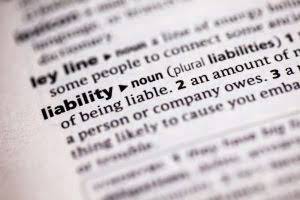
Fracking involves injecting a high-pressure liquid, mostly water, into a well to fracture rock formations containing hydrocarbons. This process facilitates the extraction of materials such as crude oil and natural gas, allowing them to be refined once returned to the surface. Domestic energy production has increased faster than at any other time in history, with crude oil production more than doubling between 2011 and 2022. US crude oil peaked in 2019 with the country producing an average of 12.3 million barrels per day. A leading energy industry report has revealed a steadily climbing number of oil and gas rigs in the U.S., offering a harbinger of improved near-term oil and gas production stateside. Overall, oil and gas accounting jobs can provide a rewarding career for individuals with a strong understanding of accounting principles and a desire to work in the oil and gas industry.
Joint Venture Accounting
- Most major E&P companies implement the Successful Efforts (SE) method due to the transparency it provides.
- Blackstone owns 50% equal Working Interests in Strawn; with Eagle Natural Resources, who also is acting as Operator on the Project.
- Production Sharing Contracts (PSCs) are a prevalent arrangement in the oil and gas industry, particularly in regions where governments seek to retain ownership of natural resources while leveraging the expertise and capital of private companies.
- The classification of reserves into proved, probable, and possible categories is a crucial step in this process.
- The terms of the contract will dictate the specific point of transfer, which in turn determines when revenue can be recognized.
Adherence to financial reporting standards is paramount in the oil and gas industry, given the sector’s complexity and the significant financial stakes involved. Companies must comply with both national and international accounting standards, such as the Generally Accepted Accounting Principles (GAAP) in the United States and the International Financial Reporting Standards (IFRS) globally. These standards provide a framework for consistent and transparent financial reporting, which is crucial for investor confidence and regulatory compliance. Accounting in the oil and gas industry is a specialized field that requires a deep understanding of both financial principles and sector-specific practices.

Reserves and resource reporting
Companies record exploration costs capitalized under either method on the balance sheet as part of their long-term assets. This is because, like the machinery used by a manufacturing company, oil and natural gas reserves are considered productive assets for an oil and gas company. Generally accepted accounting principles (GAAP) require that companies charge costs to acquire those assets against revenues as they use the assets. One of the unique aspects of taxation in this sector is the concept of “ring-fencing,” where the tax liabilities of a company’s oil and gas operations are isolated from its other business activities. This prevents companies from offsetting losses in other sectors against profits from oil and gas operations, thereby ensuring that the government captures a fair share of the resource rents.
Oil and gas reserves and resource quantification
When there are conflicts between different accounting principles or methods, a hierarchy exists to guide the selection of the most appropriate principle. Financial statements are prepared under the assumption that the entity will continue to operate for the foreseeable future. This section summarizes recently enacted federal legislation affecting the financial reporting of income taxes and new and proposed FASB guidance on accounting for income taxes.
- Deloitte refers to one or more of Deloitte Touche Tohmatsu Limited, a UK private company limited by guarantee (“DTTL”), its network of member firms, and their related entities.
- While hydraulic fracturing has helped extract fossil fuels for over six decades, its significant contribution to crude oil production is a more recent development.
- Revenue recognition in oil and gas accounting can be complex due to factors such as production-sharing agreements, joint ventures, and royalty payments.
- These contracts require careful analysis to determine when and how revenue should be recognized.
- All data provided in this article comes from the US Energy Information Administration, a subsidiary of the Department of Energy.
Petroleum Accounting: Principles, Procedures and Issues, 8th Edition

The projects objective is to initiate a detailed program of maintenance and workovers in order to increase the current rate of oil production, as the wells were producing just five barrels per day at acquisition. The Project has previously produced at rates of over 600 barrels per day and has certain production facilities in place. Assets include equipment such as pump jacks, small tank farms and other infrastructure which were included in the acquisition price. The total joint acquisition price for 100% of the project was $150,000 with each Working Interest Partner having a 50% ownership.
Carve-out financial statements
Other costs, such as geological and geophysical costs, are mostly expensed as incurred. We challenge accounting procedures in our industry, forge new paths, and set the standard for how business is done in oil and gas. You want to track the beginning and ending reserves each year, the annual production volume, and the average price for each commodity; typically you use the same low/mid/high price cases that you used in the company’s operating model. That “dry hole expense” I mentioned above is another name for unsuccessful exploration, and some companies actually add it back on their cash flow statements (long story, but essentially they are using a mix of both standards). Before you begin projecting an energy company’s financial statements, you need to know something about the units used. The accounting for AROs begins with the initial recognition of the obligation at the time the asset is installed or when the obligation is incurred.
Oil & Gas Financial Modeling 101
Then, you add up and discount everything based on the standard 10% discount rate used in the Oil & Gas industry (no WACC or Cost of Equity here). So maybe you assume that they produce 550 Bcf next year and then 600 Bcf the year after – which you would then cross-check with equity research and their reserves (you don’t want to assume that they produce 100% of their reserves in 1 or 2 years). For purposes of this tutorial, we’re going to focus on Upstream, or E&P (Exploration & Production) companies because those are the most “different” from normal companies – and they’re the most common topic in interviews. The obvious example is mining, where there’s a lot of overlap, but almost anything that depends on commodity prices is similar. Out of all the industry-specific courses I’ve released, Oil & Gas Financial Modeling has drawn the most interest.
Income Statement
- You can only rely on oil and gas reserves estimation, a process that continues throughout the life of the field.
- Fracking involves injecting a high-pressure liquid, mostly water, into a well to fracture rock formations containing hydrocarbons.
- Given the high stakes involved, accurate accounting is crucial for compliance, investor confidence, and strategic decision-making.
- Upstream companies primarily operate within exploration, development, and production.
- Approximately $300,000 jointly has been spent on maintenance and site workover plan.
The transaction is booked as a simple two-sided accounting entry debiting cash and crediting revenue. The goal of our basic course on revenue accounting in the oil and gas sector is to equip students with the foundational knowledge they need to get a solid grasp of industry-focused revenue tracking procedures. This course is designed to deliver engaging, relevant education to those new to the oil and gas arena. We perform state reporting for Texas, Oklahoma, Kansas and other states and subcontract complex state reporting needs, as required.
Financial models often incorporate scenarios to account for these variables, providing a range of potential outcomes. These principles, among others, provide the foundation for financial accounting oil and gas production reporting under U.S. GAAP is dynamic, and the FASB continually updates and issues new standards to address emerging issues and improve the quality of financial reporting.
Historical Cost Principle
It’s true that food prices have come down recently, but they’re still so high,” says Rodrigo, a private security guard working in Caracas, Venezuela’s capital. However, away from headline data, the regional break-up of figures points to a mixed picture across the various U.S. energy producing regions. For instance, the rig count for North Dakota and Montana came in at its highest since June 2023 at 36. One of the main tasks in operational accounting is accounting for the revenue being produced by the wells and paid out to the owners. Our services include Accounting & Bookkeeping, VAT Consultancy, TAX, CFO Services, Management Accounting and Internal Audit.
